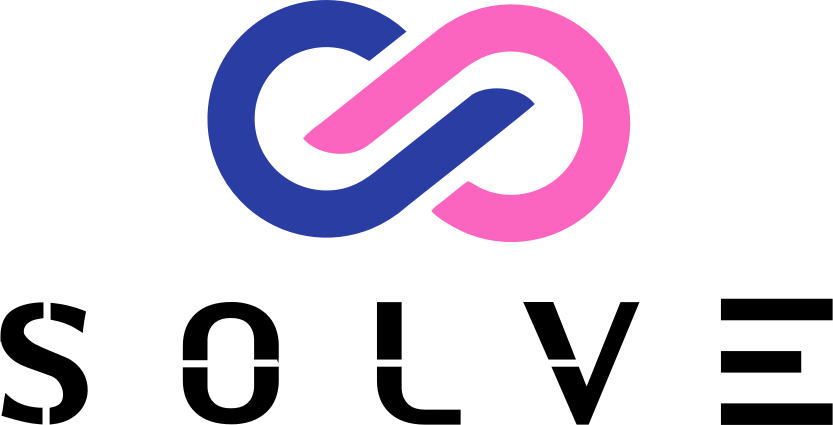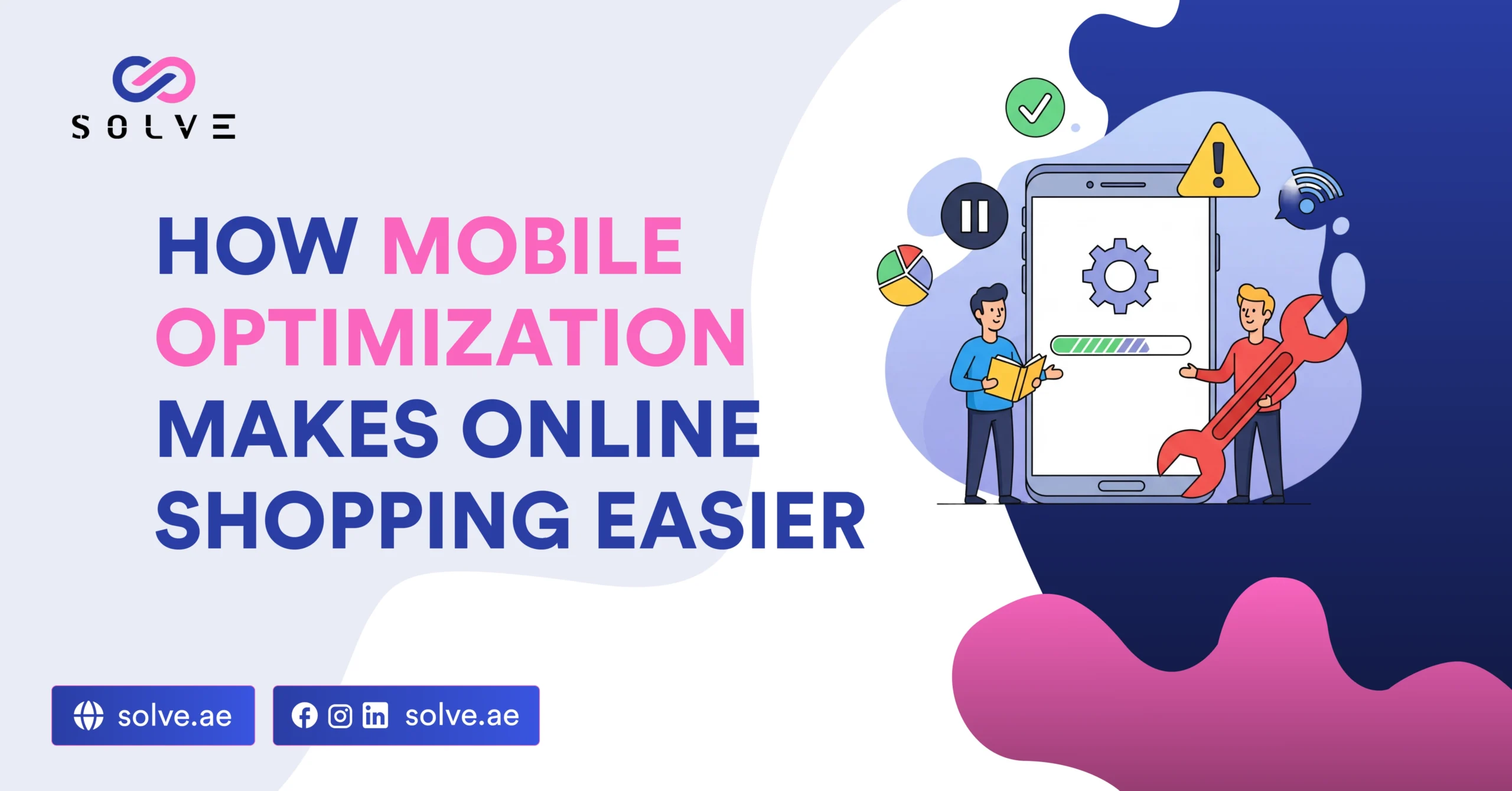- By Vanshika Choudhary
- September 9, 2025
Imagine: You are trying to purchase something on the run, but the page takes forever to load, images are all out of focus, and the payment gateway button is so tiny that one has to nearly tap with their fingertips to click it. The incident is going to follow in most instances: the purchase gets aborted. Mobile optimization is destined to be the greatest hitting nerve of online shopping success, with preparation for 70% of e-commerce traffic from smartphones in 2025 (Statista report).
At Solve IT Technologies, our Mobile Optimization Services help businesses overcome these exact challenges by making online shopping faster, smoother, and more user-friendly.
Why Mobile Optimization for online shopping matters?
Speedy Loading
Speed works as a deal clincher in online shopping. The common statistics reveal that if an online site takes more than 3 seconds to load, most users choose to exit. A mobile-optimized website comes into action to compress images, cut down on code, and contain a cache so as not to put off shoppers through loading. The quicker the site loads, the lower the bounce rates; moreover, consequent sales are higher.
Enhanced Usability
Mobile customers expect their buttons to respond in real time while navigating smoothly. Mobile optimization covers easy menu browsing, readable font sizes, and calls-to-action that may easily be tapped on time, without actually zooming in. This keeps the shopping journey stress-free and enjoyable. If you like to dive deeper, check out latest blog post on Why Google Prefers Mobile-Friendly Websites
Smooth Customer Journey
The well-optimized mobile website ensures a smooth customer journey from discovering a product to checking out. The efficient features—one-click checkout, form autofill, and mobile wallets—applied to the purchase ultimately make it fast and easy. Customers are likely to abandon carts less and build confidence in the brand with these options.
SEO Advantage
Because Google considers mobile-first indexing, the mobile site performance of a particular site will largely affect its ranking. Being mobile-friendly will hence ensure high visibility of the site in the search results, especially those search variations that include local intent, such as “best mobile-friendly online store in Dubai.” This translates to traffic and opportunities for conversions.
Real Experience & Expertise: What We Have Seen
In one instance, a fashion retailer in Dubai managed to cut the mobile homepage load time to almost one-half, from 6 to 2.5 seconds, in just that short span of time. Besides that, after three months, their mobile conversion rate for sales had improved by 20%. Remember how I said these different kinds of things really matter when you’ve got little tweaks like compressing images, lazy loading, deleting heavy scripts, etc.? Having worked with e-commerce clients, I know mobile optimization isn’t a vanity metric—it directly impacts sales.
Humanized Unique Content: Beyond Mere Technicalities
Mobile Optimization is not only a set of Google technical standards; it is solving a real-life human problem. An office worker trying to shop during a quick lunch break would not want to go through the agony of filling out a checkout form with 10 fields. A slow traveler will not enjoy waiting for product images that weigh a couple of megabytes to get downloaded on his Wi-Fi. If these scenarios are kept in mind while designing for such customers, their personal feelings, practicality, and trust would be forged. This is what makes it stand.
Speed & Performance: The First Step to Mobile Success
Google measures site performance by Core Web Vitals—LCP (Largest Contentful Paint), INP (Interaction to Next Paint), and CLS (Cumulative Layout Shift). These parameters indicate how fast your content gets loaded, how responsive it is to user interactions, and whether the page layout remains stable while loading. A good score would ensure your customers never face delay or annoyance from “jumping buttons.”
Navigation & Usability
Simplicity is the mantra working in favor of shoppers. Simple menus, thumb-friendly buttons (at least 48px wide), and sticky navigation bars are some of the excellent means for users to navigate around your store. Hide your cart or “Buy Now” button in a menu and watch customers walk away. Mobile optimization means intuitive and frustration-free shopping.
Visual Media & Mobile Design
Sluggish images and videos sell the product or the site as slow. Responsive images, compressed file sizes, and lazy loading will keep the page light. The video must have a mobile-friendly player with autofocus and no payment of customers’ precious data and battery.
Mobile SEO Implications
With Google going mobile-first indexing, it means that search rankings are based mostly on your mobile site instead. Structured data for products like price, reviews, and availability will enhance your store’s appearance in rich snippets. Combine it with a local SEO that uses keywords such as “mobile-friendly shopping in the UAE” to attract customers from both global and regional sources.
Internal Linking & Topical Authority
Sites with topical depth are preferred by Google. Internal linking from this blog to a related post, such as E-commerce SEO for Local Businesses or The Role of UX in Driving Conversions, will help build a knowledge hub. Internal linking also keeps readers longer on your site, indicates expertise, and bolsters your reputation in the e-commerce niche.
Conclusion
Mobile optimization is no longer a mere option in the online retail world. If the site is fast and user-friendly, it gets ranked by Google and increases sales via a great customer experience.
The basics must be done first—speed, design, and navigation—then one can move on to schema and local SEO. Keep updating the site to help your rankings and win your future customers’ trust and loyalty. Contact us, and enhance the mobile shopping experience. Pick one task from the checklist and do it today to grow your online shop!




